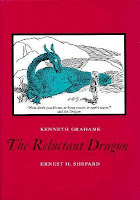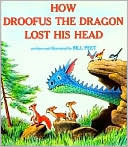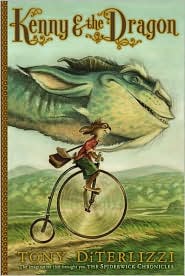A Drowned Maiden's Hair is by Laura Amy Schlitz, winner of the 2008 Newbery Medal for her book Good Masters! Sweet Ladies!: Voices From a Medieval Village, which is a collection of monologues and dialogues. She has written a moving work with her first young adult novel which was published in 2006.
On a Spring morning in 1909 we first meet Maude Flynn, eleven years old and locked in the Barbary Asylum for Female Orphans outhouse singing the "Battle Hymn of the Republic." What unfolds from there is a deliciously long but fast paced story with characters as intricate as unfolding origami. Maude is one of the most layered, convincing child characters I have read in a long time. Orphaned at a young age, she is separated from her older brother, Samm'l, and infant sister when an older couple arrive to adopt a strong boy to help on the farm. They are enchanted enough by beautiful baby Kit to adopt her too, but have no interest in Maude. Maude begins to believe that she is unlovable and the Superintendent of the asylum for girls she is moved to after the Catholic orphanage closes convinces her that she is impudent as well. She develops a brittle exterior to go with these beliefs, but these can be overlooked by Hyacinth Hawthorne.
Hyacinth, though middle aged, is the youngest of the three Hawthorne sisters of Hawthorne Grove. Hyacinth is beautiful, well dressed and charming when she chooses to be. Judith, the eldest, is stern and religious. Victoria, who lost a special gift when she betrayed it years ago, is sensitive but also resigned to her fate as a woman of a certain class who is quickly becoming impoverished because she is a woman of a certain class and therefor cannot work. The three women have found a way to earn money and keep their home, it is somewhat respectable, but definitely not honest. Hyacinth passes herself off as a spiritual medium and the sisters hold seances at which tables rise, thumps are heard and chandeliers sway. In an effort to please a client and earn enough money to pay off the mortgage on their house, Hyacinth convinces her sisters that they should adopt a child. Maude is to live inside the house in Hawthorne Grove, never leaving it, and learn the secrets of the trade as well as everything she can about Caroline Lambert, the dead daughter of their wealthiest client, whom she has been trying to contact in the years since her death. Mrs Lambert has offered $5000 to any medium who will allow her to see her daughter one more time.
Maude, so desperate to be loved, accepted, well dressed and fed and, best of all, well read, goes along willingly, even holding herself aloof from her brother when he pays a surprise visit before moving across the country with his adopted family. This is one of the most well written scenes in the book in terms of Maude's character. As the meeting with her brother progresses, Maude has flashes of memories and emotions ebb and flow with them. Samm'l tries to apologize for going along with the adults on the day of his adoption and leaving Maude behind and asks for forgiveness. As Maude considers and shares her memories of that day the inconsistency of memories and our brain's desire to make sense of things is revealed. Maude remembers throwing a tantrum and has always assumed that is why she wasn't adopted. Samm'l tells her that she didn't throw the tantrum until after the Vines had made their decision. Maude had always thought that her undesirableness had been because of her anger, not the mere fact of who she was. But, as an eleven year old child she cannot really begin to grasp this and instead steels herself against Samm'l's offer to return for her when he is an adult in a few years. She has a home and she is wanted, Maude tells him. That basic, primitive, childhood need has been satisfied for Maude, for now. But things will change.
My favorite character in this book, after Maude, is the deaf, mute cook and housekeeper the Hawthorne sisters have employed for so long they cannot even remember her name, only the nickname that Hyacinth gave her because of her fear of spiders - Muffet. At first, with her limp and her odd grunts and shrieks, Muffet seems to be a minor character. However, as she and Maude begin to interact, Muffet drawing her requests and questions on a pad of paper always in her pocket, an idea occurs to Maude. Using a cookbook, Maude begins to teach Muffet how to read. Despite the fact that Maude is the teacher and Muffet the student, the roles of child and adult are never reversed for these two. Muffet is always caring for and watchful of Maude, even though she does no know or suspect what the Hawthrone sisters are up to. The progression of the relationship between these two is very moving, especially at the climax of the story when both Maude and Muffet, unknowingly, try to rescue the other from a disaster. By the end of the story, despite the lack of verbal communication, it is clear that Muffet loves Maude and that Maude is capable of returning that love. As the story progresses, Maude sees more of Hyacinth's inconstancy and is hurt by her but continues to yearn for her attention. Maude also inadvertently meets the mother of the dead girl she has learned to impersonate after she has snuck out of the house and a whole other story begins to unfold. The fabric of the tale and the characters themselves unravel and come together again in a satisfying but bittersweet way.
This is such a wonderful book for a young girl. While aspects of the plot and unsavory characters may seem mature, this book is definitely in the tradition of Lucy Maude Montgomery's Anne of Green Gables. And, while I love Anne Shirley, I would rather read a series of books about Maude any day.
Source: Purchased
Source: Purchased






